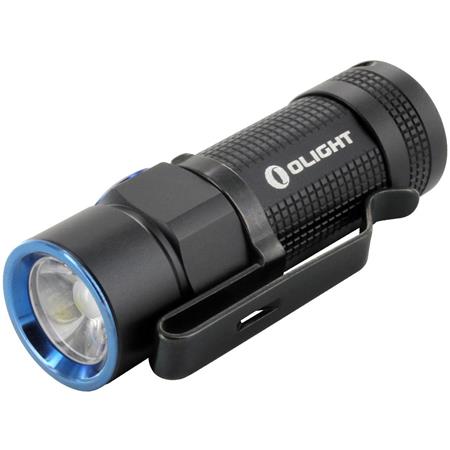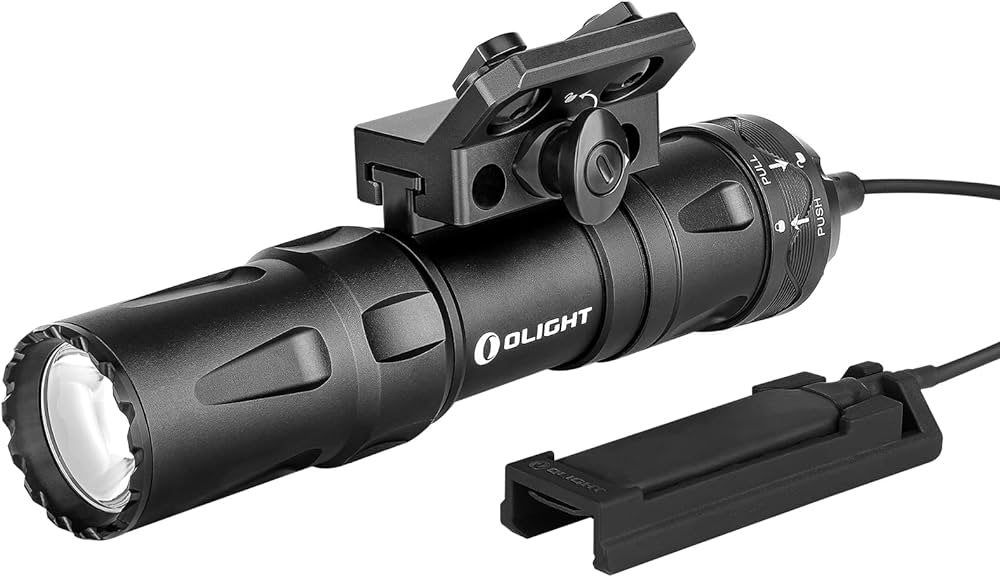Friday Feedback
It has been an exciting week out on the West Coast. In California, they got a win in the magazine ban. There are some really crazy things happening at the Ninth Circuit, which I’ll cover tomorrow.
Up in Washington state, a different judge decided that she just didn’t know if magazines were arms protected by the Second Amendment and will have to wait until briefed on the merits.
The Rahimi case is at the Supreme Court. Final briefings by the defendant are due early next week. There are no “good guys” in this case. There is only the “state” and the defendant.
J.Kb. is on a pilgrimage to mecca. He’ll have to pass through enemy held territory before he reaches his destination. I think we are all hoping that he will bring back great stories of his time there.
Please let us know what’s on your mind. Ask questions. Suggest articles.
Brumback v. Ferguson (E.D. Wash., 22-cv-03093)

B.L.U.F.
A gag inducing opinion from a rogue court.
(2900 words)
Who is Dimke
Dimke graduated from Pepperdine University in 1999 before entering Vanderbilt University School of Law, where she graduated with a J.D. in 2002. From there she went to clerk for Alan B. Johnson, a Reagan appointee. Likely because he did his undergraduate work at Vanderbilt. From there, she moved on to clerk for Richard C. Tallman on the Ninth Circuit.
Tallman is a Bill Clinton appointee. His professional career starts in the government. He was a DoJ lawyer and then Assistant United States Attorney in Seattle. From there, he went into private practice, focusing on white-collar criminal defense.
According to Wikipedia, his notable opinion was:
After clerking for Tallman, Dimke became a DoJ Trial Attorney, then an Assistant U.S. Attorney. From 2012 through 2016 she was the Assistant U.S. Attorney for the Eastern District of Washington.
In 2021, Biden nominated her as a Judge for the Eastern District of Washington.
This is a person who has spent her entire career working for the government. As a government lawyer, she gets to choose what cases she prosecutes. If she doesn’t think she can win in court, she can plead the charges down or get some other “win” without having to go to trial.
Her job for all those years was to get wins for the state.
Steps To a Win
The Games People Play, Duncan v. Bonta (9th Cir., 23-55805)
B.L.U.F.
On September 22nd, Judge Benitez entered his decisions, finding that California’s ban on magazines was unconstitutional. Later that afternoon, the state gave notice of its appeal to the Ninth Circuit. On October 2nd, the temporary stay issued by Judge Benitez will expire. If the Ninth Circuit does not issue a stay before then, California will have its second freedom week in four years.
If there is such a tight schedule, why did the state delay until Tuesday the 26th to file for an Emergency Stay?
(1800 words)
The state is arguing that they need the stay because having magazines “flood into the state” will cause death in the street and more mass shootings. Emotional blackmail.
What is their reason for an appeal?
—ECF No. 2, Virginia Duncan v. Rob Bonta, No. 23-55805, slip op. at 2–3 (9th Cir.)
This is worth reviewing. His analysis was part of the basis of Bruen. He got it right, but when we get upset when the inferior courts fail to follow the Supreme Court’s clear rulings, we should see that this inferior court failed to follow the Ninth’s clear rulings.
Lower courts would rather not be first in any major decision. This is likely why the Fourth and Second Circuit haven’t released their opinions. They would prefer those first cases to come from some other circuit, so they don’t get slapped down.
When arguing a case, the parties want to be able to reach for the highest authority they can. Citing legislation, legislative history, doesn’t work very well. What works is when the party can point to a superior court’s ruling on the legislation.
Some kid says, “I don’t have to identify because the law says I only have to identify if I have been lawfully arrested. I’m not under arrest, I don’t have to ID.” This might be true. It doesn’t mean much. If that same kid points to a district court ruling that says the same thing, that might mean something, but only if that district court oversees this area.
If the circuit court overseeing the area has said the same thing, that holds still more weight.
Strangely enough, a Supreme Court ruling does not. That’s because the Supreme Court’s rulings have to be “interpreted” by the appeals court.
Read More
Product Review, Olight S1R Baton and Odin Mini
In case you all haven’t figured it out, I’m not a rich person. The only reason I have nice stuff is that I’m old and have slowly accumulated this stuff/junk.
A few years ago, I purchased a replacement EDC light. Prior to this, I was using a Mini MagLite. The type that took two AA batteries. I had upgraded to the good bulbs.
The problem I had with these lights is that they were always dead when I went to use them. They would turn on in their holster or in my pocket. By the time I noticed, they were dead. While they had a spare bulb in the battery cap, I don’t like mucking around changing bulbs in the dark.
All of my MagLites were dead. The big ones, the mini’s. All of them. I had been using the cheap LED lights but decided to take a step-up. I purchased a $70 flashlight.

Given that I was used to spending $20 to $30 for a Mini MagLite, this was a big price difference.
What a difference. I use that little Olight every single day. Not an exaggeration.
First, it is tiny. Barely 3 inches long and about the size of a nickle. It comes with a reversible clip. When in the default orientation, the emitter is pointing out of your pocket when clipped to your pocket. This means that you can clip it to the bill of a cap and have an excellent light source.
It has a single control, a side push button.
So what makes this thing so damn amazing? The amount of light it throws along with its run time.
The mode I use most often is the “moon” mode. This is a 0.5 Lumen mode. This is the mode I use at night, moving around the house when the lights are out. It makes more than enough light to see 10 to 15 feet in the dark, but it doesn’t blow out your night vision.
A single click turns it off or on.
If it is on, you can press and hold, and it will cycle to the next brightness mode. 12, 60, 300 Lumens. 300 Lumens will nicely light the world. At 300 Lumens it has a 60-minute run time, at 60 Lumens it has a 4.5 hour run time. At 12 Lumens, 33 hours. If you are only using the 0.5 Lumen mode, it has a 15-day run time.
That is a heck of a long time.
In addition to the normal modes, there is a 600 Lumen mode and a 900Lumin mode. When I’m going after trash pandas, I will sometimes use the 600 Lumen mode. I had forgotten how to get into the 900 Lumen mode.
There is also a 13hz strobe mode.
One of the reasons I chose this light was that it was rechargeable. It has a magnet attach charging connector. Put the tail near the charger pad and they jump together. The charge indicator goes red. When it turns green, the battery is fully charged.
But wait! There’s more! Rechargeable is all well and fine, but what if you can’t recharge your battery? That is another outstanding feature of this particular light. It takes a regular 123 cell. This is not rechargeable, and non-olight rechargeable batteries don’t recharge in the light. This means that if you need light, you’ve got it. My package came with both the Olight rechargeable battery and a regular 123 cell as backup.
One of the side benefits of that magnetic charging system is that you can attach this light to any steel item. The other day, I was replacing the igniter in my oven. I had the light in 12 Lumen mode and just stuck to the roof of the oven. This gave me more than enough light to work with. Because it is so small, it goes into places where I could not get a big work light.
The S1R Baton is no longer made. They have follow on versions that have nearly the same features. I would not hesitate to buy any of them.

Which takes us to the Odin Mini. Because the Baton is side activated, many of the tactical light grips don’t work. It is also so small that sometimes it is hard to orient. This has become an issue when dealing with trash bandits.
I picked up the Odin Mini because it was a weapon mount light that had a quick detach. It can easily be used in your hand as well as when mounted on the provided M-Loc mount point. The package came with a charger that works with my Baton, the mounting hardware. The pressure switch for weapon mounting is also included.
It all just works.
The control is in the tail cap. There are two brightness modes, 300 and 1250. Yeah, the low power is at the “normal max” for the Baton. The 1250 Lumen mode will really light up the dark.
Again, there is only a single control. To activate the bright mode, press hard. To activate the low mode, press softer. A quick click and stays on. Click and hold to have the light go off when you release pressure.
The pressure switch uses the same quick or long, but only activates high mode.
As an off weapon light, it works well. On the weapon it works well.
For me, the big thing was learning that there is a huge difference between what I need for a weapons light and what I need for every day. This thing is too bright for most everyday uses. As a weapons light, in my environment, it is damn near perfect. The only thing that would improve it is if I could select the low mode from the pressure switch.
If you want more, they have a version with a built-in green light laser. You can mount the light and then zero the laser to the point of impact. The GL is visible in both low light situations and most bright situations. The laser can be run with the white light, by itself, or just the white light.
There is a big brother version, the Odin (vs. Odin Mini). I considered it, but I didn’t need the extra Lumens, nor did I need the laser option.
I’m currently looking at their Warrior series as a second, slightly larger, EDC light. One of the requirements is that the light must have a tail switch.
Tuesday Tunes
In keeping with NYC v the rest of the country.
I’ve been to NYC a couple of times. My senior class went to see a Broadway play. It was something worth doing. Never again.
The Hotel we stayed in was expensive and felt cheap and run down.
The next time I had to deal with NYC was, I rode the bike up with my daughter on the back. We were looking for a particular restaurant. Early GPS days. We rode around these three blocks about a half dozen times and couldn’t find the actual street, much less the restaurant.
Finally, I spot a cop, roll up to him, and he starts screaming at me for running a stop sign.
Said stop sign was in the middle of the block. My line of sight to it was completely blocked by a box truck. The cop was still angry.
I talked my way out of the ticket and asked for directions. Cop kindly gave me directions. We thanked him and rode off.
We were following his directions when I realized they were directions to the Holland Tunnel and would take me off the island.
Turned back and finally found the place. Turned out that it was located a half block from where that cop was standing. The “road” I was looking for was actually an ally. The end of that ally was about 20 ft behind me when I stopped to speak with the cop.
We also did a ride through NYC with a large group of bikers. I just remember how freaking dirty everything was. I didn’t want to touch anything. The sidewalks were narrow in most places, broken, and full of garbage. The drivers were rude.
I have not seen the things that J.Kb. has seen, I’ve been luckier in some ways as I have been able to live rural for the last few years with no need to visit the cities.
Is it expired?
(1200 words)
— Mac
Great question. For the medical questions gear questions, we can hope that one of our medical professionals responds. Otherwise, I’m going to hope that Dive Medic answers on his blog. Which I will then steal and put here.
Our family has a two tier system of medical goods. The first is the Boo Boo kits. We use them. They get restocked constantly. Now, some of the things in the boo boo kits don’t get used regularly, so they get rotated out about once per year.
Think imodium. When you have the runs, you need it. If you don’t have the runs, it just sits there. The shelf life for that stuff is much longer than a year.
For the small kits, we use single dose packages. These are more expensive than buying a bottle over the counter, but they are well-marked, waterproof, small, and well labeled. Just what I want in a boo boo kit. My other option would be to use aluminum pill bottles.
There is a problem with those aluminum pill bottles. As the wife of a friend found out, luckily, not in the hard way. Her husband was prescribed nitroglycerin for because he had a bad heart. In the event of a cardiac event, he was supposed to put a tablet under his tongue.
He carried his emergency nitro in a small aluminum pill bottle around his neck. One day, his wife decided to check on it. Just for grins. What she found was powdered nitro. Over the course of a few years, the pills had ground themselves into powder.
She now replaces those pills twice a year.
For the single doses, I’ll pay for the packaging and keep the bottles for larger kits.
The single biggest thing you can do to keep your boo boo kits stocked and up-to-date is to use it. If you are using it, you will see that the band-aids need to be replaced. You’ll notice that some of the meds are getting low. If you use a single dose of anything, when you get to home base, replace it.
I’ve watched people run to the house to get medical supplies rather than use their first aid kit because it was too hard to replace anything in the kit. So the kit was for “emergencies” which never happen.
Get in the habit of using your first aid kits. It will help you in the bigger emergencies. And you will have a better idea of how to use those things.
Which takes us to blowout kits, or stop the bleed kits. In my opinion, these kits should be shelf stable for at least a decade. Your C.A.T. or Soft-T or SWAT-T or whatever its brand is tourniquet should be good for at least a decade. The only thing in your blowout kits that should have expiration dates will be your clotting agents. Celox or Quik-Clot, for example.
If so, they have to be replaced on a regular interval.
As some of you know, I recently got back into photography. One of the things I found was that my expensive SpeedLight was a near write-off. I never “stopped” doing photography, I just wasn’t doing it. The batteries had leaked inside my SpeedLight, and it took me a good three hours of work to rescue it.
What this means to you is CHANGE YOUR BATTERIES! McThag’s blog has a post where he talks about his yearly battery changes. He goes through all of his gear and replaces batteries, or at the very least tests them all. These are the batteries in radios, lights, optics, and anything else that you depend on.
For me, I don’t replace the batteries on my light. I have a spare battery for each of them. I also have batteries that are single use for some of them, rather than rechargeable.
For my kit, I do have batteries in the kit. Those batteries are rotated into the gear that needs to be updated. Then new backup batteries are put into the kit.
When I’m doing the battery replacements, I am checking expiration dates on all the medical gear in that kit.
In general, this is a single weekend of laying hands on every piece of kit, verifying it is in working order, doing any PM required, restocking and putting things back.
The same way, I do a once per year inventory of my firearms. It isn’t enough to know I have it or to know it is in that safe/cabinet. I have to lay hands on each piece.
The other strong method is technology.
In Number Of The Beast Heinlein talks about packing Gay Deceiver, their vehicle. The gist was that you can pack more into a given space if you are not attempting to organize the packing. It might be harder to pack a pair of shoes together, but there might be two corners where a single shoe would fit. Thus, denser packing.
As Heinlein described it, anytime you needed something, you “just” asked the car, and she would tell you where those things were stashed. Easy.
And impractical. You need to be able to find things.
Technology can help if you can make yourself obey technology. As an example, my computer tells me to check Supreme Court cases every Monday. Sometimes I do, sometimes I don’t. The technology doesn’t fail, I do.
If you have a document which tells you when you have to replace things in each kit, and you use it religiously, that might work for you.
If you have a document that just tells you when it is time to inventory and replenish each kit, that might work for you.
Regardless, make a plan to check your gear at least once per year. You will be amazed at what you find.

